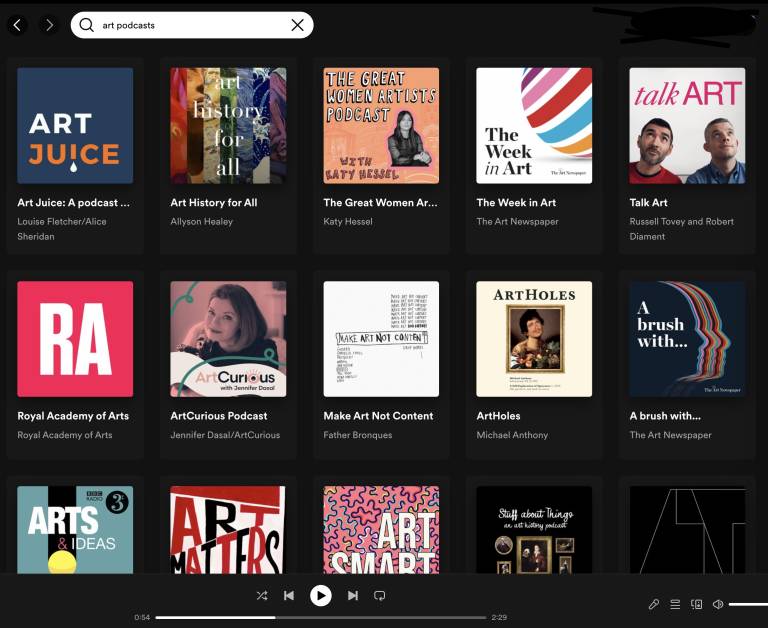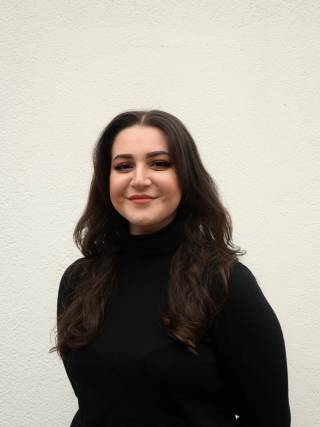
Art is never static, constantly adapting to its ever-changing environment, which is why it comes as no surprise that art has embraced the demands of the present and modern day. During this dynamic moment, podcasts have become a prominent development and versatile tool for entertainment, teaching, conveying stories and a convenient on-the-go form of consumption. Though podcasts explore a range of topics, it is evident that podcasts have had a significant impact on the art world. Podcasts provide a new insightful way to explore art. This article will explore how podcasts have made art available to a larger audience, made learning about art more informal and challenge the exclusivity associated with the art world.
Over the last couple of years, a collection of podcasts have made their mark across a range of streaming and social media platforms. Some include notable examples include Talk Art, The Great Women Artists Podcasts, The Week in Art by The Art Newspaper, All About Art by Alexandra Steinacker, Art History Babes and Art Curious. Each of these podcasts centre on exploring different focusses within art and art history but each share the desire to create more inclusive approach towards art and art history.

Talk Art, as an example, provides a wholistic and informal look at the art world. Talk Art is a podcast centred on bringing in a new individual to interview each week and discuss their relationship with art. Some interviewees have a clear, more direct, relationship with art or the art world, whereas others do not but draw links to art in their life. Talk Art’s initiative epitomises the power of podcasts in breaking pre-existing boundaries and confines imposed by the idea that art and art history are reserved only for those who consider themselves to possess inherent comprehension.
Talk Art takes pride in bringing everyone into the discussion. Each interview is strictly unique from one another, each providing unique insights about differing aspects of art history and personal experience. Similarly, Talk Art (like other podcasts like The Great Women Artists Podcasts) serves as an example as to how podcasts can serve as a platform for rising artists, some of whom may have been underrepresented by more traditional forms of art information sharing prior. Talk Art has interviewed a range of interviewees some of which including Hans Ulrich Obrist, Toyin Ojih Odutula, Pedro Pascal, Billy Porter, Haroon Mirza, Tai Shani, Grayson Perry, Tracey Emin and Elton John. This wide range of individuals who come from differing backgrounds and careers all allow discussions on art to blossom in unique ways.
Most importantly, the podcast is a key advocate for a range of key topics include gender identity, sexuality, and ethnicity. These interests become intertwined into conversations allowing each interview to raise importance of key issues. Also, what is important to highlight is that the hosts Robert Diament and Russel Tovey both did not come from traditional academic art backgrounds but instead have had a strong interest for art during their lives at differing points. This acts as an example to listeners/viewers that talking about art is free to do by all individuals and not necessarily those who have studied it in any way.
Notably, this podcast also continued recording in the time of lockdown. This not only demonstrates a podcast’s ability to still be produced even in a time of creative restriction, but also highlights the ability of podcasts to capture and document history in real time through spoken conversation rather than more traditional written documentations.
Podcasts as a form of education in the art world act through conversation and communication. The formatting of podcasts itself allows for long extend forms of conversation and strings of thought to be presented to viewers without further edited cuts of these processes. This format allows for conversations and ideas to be more in depth and authentic, covering a range of information in one sitting. Feelings and emotions are set on this virtual stage and provides a tool for exploring art. Importantly, these conversations and differing forms of communications do not remain limited to the podcasts themselves. Podcasts allow viewers and listeners to engage in these conversations beyond the podcast and onto social media where they can engage with topics further. This suggests that podcasts are not only informing, educating, and sharing information to the viewer, they are also sparking curiosity in the viewer to remain with their interests for longer. This allows the viewer to remain inspired and feel part of a widespread online community.
Whilst this is shifting the way individuals engage with art world in new ways, this is also marking a key shift in how a range of individuals in the art world can make their mark. Although this is still the beginning of this new form of art sharing and art presence online, it is evident that podcasts, and the presence of social media, can carve a space for people to share their voices- giving room to underrepresented voices in the art world to make their mark. Podcasts can be a sustainable way for individuals to share their interests at reasonable costs as they do not necessarily have to rely on specialised equipment and information can be shared instantly. Whilst in theory this may allow new voices to come to light in the art world and in the art world presence online, this is something that will come in due course.
Whilst podcasts may be accessible for some people and may be a good way of engaging new listeners, the formatting of podcasts may not be an inclusive form to all individuals of the public as it poses some accessibility issues. For some individuals, it may be beneficial for a visual accompaniment with subtitles to ensure a wider range of the public can engage and participate in this new wave of discussion and communication. Whilst there may be limitations in the use of podcasts for sharing information around art, it is certainly a positive first step into re-evaluating our methods for sharing information and experiences related to art.
Evidentially, podcasts have revolutionized the art world and have been a new way of sparking the curiosity of wider audiences. Podcast have been able to make art more available to a larger audience, make art more informal and challenge the exclusivity associated with the art world. It is clear than new advancements in technology and social media are creating new avenues with the art world and for artists and art historians. Podcasts can teach contemporaries in the art world to always challenge their methods and to continuously consider how art can be adapted to fit the demands of the present day. In the future, it is almost certain that we can anticipate further interesting technological developments that will help individuals challenge the norms of the art world and create a welcoming space for all.
 Close
Close


